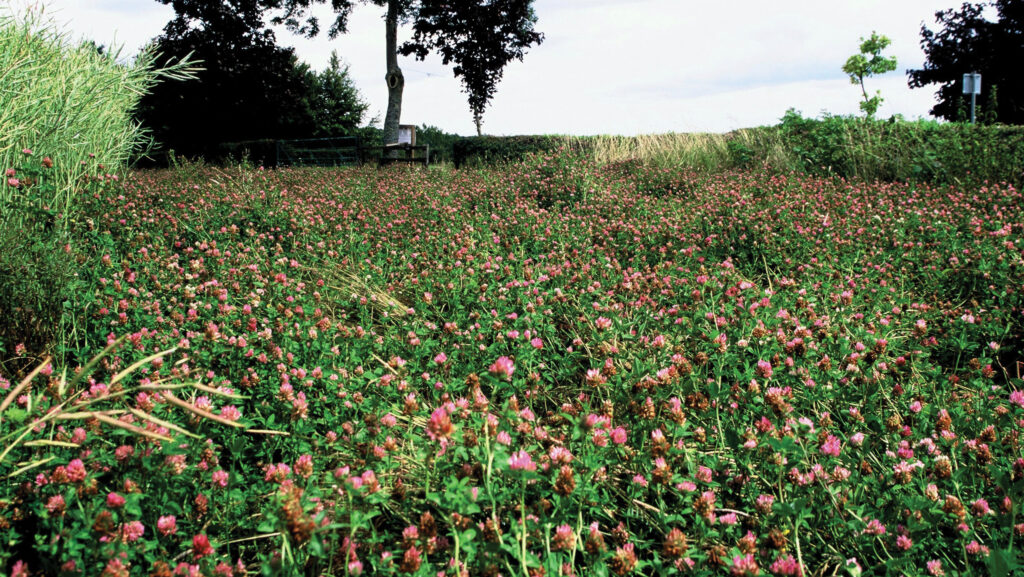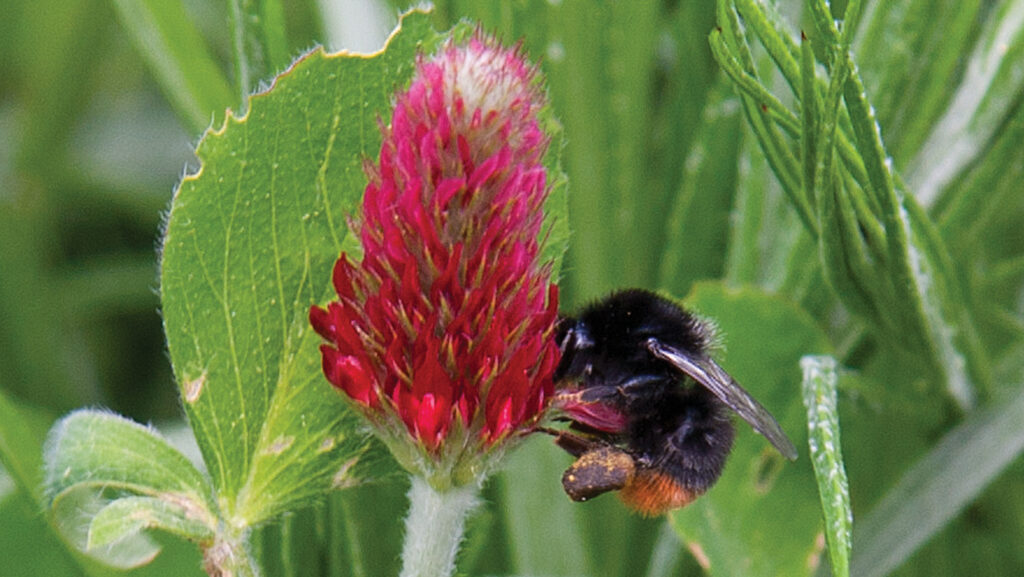[ad_1]
Only approximately 5% of Sustainable Farming Incentive (SFI) agreements in the 2023 scheme have selected pollen and nectar flower mixes (AHL1), making it one of the least favored choices, according to recent Defra statistics released in July 2024.
Providing a payment of £739 per hectare, which is less than the £853 per hectare available for winter bird food on arable land (AHL2), the initiative aims to supply nourishment for beneficial insects, particularly pollinators.
For more insights, see: How to integrate the SFI no-till approach into cropping
This program also seeks to promote natural crop pest predators by cultivating flowering areas through pollen and nectar mixes from late spring until summer.
The guidelines for those enrolling in CAHL1 (formerly AHL1) for the SFI 2024 are largely similar to those who participated in the 2023 scheme, especially after the introduction of a 25% area cap in late March 2024.
For 2024, ten actions, including CAHL1, are designated as “limited areas,” which means the combined footprint of these areas cannot exceed 25% of the total farm size.
3 Essential Tips for Pollen and Nectar Mixes
- Apply seed by broadcasting, avoiding drilling.
- Sow during optimal seasons (April or August).
- Prepare for frequent mowing during the first year.
Site Selection

© Marek Nowakowski
To enhance the ecological value of pollen and nectar mixes, these should be planted in warm, sunny locations that are well-sheltered, ideally situated on the south or west side of a hedgerow.
This guidance is provided by Marek Nowakowski, an environmental stewardship consultant from the Wildlife Farming Company, who was involved in designing and researching the original pollen and nectar strips in collaboration with the Centre for Ecology and Hydrology.
“Planting on the north side of the hedge is ineffective, though some farmers may choose that location. It’s better to look for alternatives in such cases,” he advises.
Pollen and nectar mixtures can also be used along the edges of cropped fields and to protect watercourses, with a preference for land with lower fertility levels.
“Excess soil fertility undermines plant diversity,” Marek points out. “If the phosphate index is greater than two, the ground tends to be quite fertile, resulting in a more labor-intensive mowing and management process.”
“The nitrogen from organic soil becomes less accessible since there are no cultivations to mineralize the nitrogen following sowing,” he elaborates.
While cultivating pollen and nectar mixes on fertile soil is not impossible, it will require more stringent management practices.
Since smaller insects can typically fly about 250 meters from their nests, Marek recommends aiming for four or five flowering patches within each square kilometer to maximize pollinator accessibility.
Optimal Sowing Period
Although Defra provides flexible guidelines regarding sowing dates, Marek suggests that April is usually the best month to seed, as the soil tends to warm and retain adequate moisture. August serves as an alternative sowing period.
“By late September, many flowering species may not have established sufficiently to survive adverse winter conditions,” he cautions.
For areas with moderate to high blackgrass levels, he advises autumn cultivation followed by spring sowing, as blackgrass primarily germinates in the fall, allowing time to mitigate its recurrence.
“Many farmers have found success with spring sowing after previous failures in autumn,” he notes.
Following a cereal crop will also facilitate weed management, as volunteer cereals generally pose fewer challenges compared to volunteers from oilseed rape or beans.
Pollen and nectar mixes can also follow certain stewardship options.
“Following bird food crops generally isn’t problematic, since that includes mostly annual species, and you can manage by mowing appropriately.”
However, it is best to avoid planting after AHL3 grassy field corners or other areas left fallow for extended periods, as perennial weeds may become problematic. “Removing perennials from perennial plants is challenging. Sowing after cereals minimizes this risk,” he adds.
Establishment and Care
Seed should be distributed on the surface of a well-prepared seedbed instead of being drilled, emphasizes Marek.
“Nature inherently spreads risk and promotes survival by growing on the surface while remaining dormant when buried. No drill can accurately place seeds at a depth of 1cm,” he explains.
After broadcasting, it is recommended to roll the area using a ring roller rather than a flat roller to enhance seed-to-soil contact.
Post-sowing, the primary focus should be to control annual weeds while fostering the growth of the desired perennial plants, Marek advises.
“Mowing annual weeds as required will transition dominance from annuals to perennials. Don’t hesitate to mow during the first year,” he encourages.
Mow when weeds begin overshadowing the planted species or when they reach knee-height during year one.
“Mowing will not kill perennials, merely delaying their flowering,” he reassures.
Removing cuttings is ideal; however, if that’s unfeasible, increase mowing frequency to create less mulch, which can smother the sown perennials.
Be sure to perform the last mowing in late September, as most insect species requiring pollen and nectar will have completed their life cycles or entered hibernation by then.
“If managing blackgrass, this will lead to a significant reduction,” Marek explains.
“At the end of March in the second year, check for any growth over 25cm and mow if necessary to prevent it from becoming unmanageable later in the season.”
“In late May, consider mowing half the area, as this will extend the flowering period by an additional six to eight weeks. This provides a food source for insects like queen bumblebees to prepare for hibernation.”
Always inspect the area for ground-nesting birds before mowing, he adds.
While SFI permits rotational planting of pollen and nectar mixes, Marek indicates that rotating every year won’t yield significant wildlife benefits.
“There’s no reason to rotate; you’ve chosen to plant it on land you don’t intend to farm,” he cites.
Growers should commit to cultivating CAHL1 for a minimum of three years, potentially extending to multiple three-year terms, leading to a consideration of higher-quality, more costly mixtures.
“Studies indicate that higher-quality mixtures lead to enhanced wildlife benefits and greater longevity,” he states.
A higher-quality mix may cost around £600 per hectare, particularly when selecting wild cultivars rather than those bred for agricultural use. “Wild cultivars typically last much longer than standard agricultural varieties,” he concludes.

© Marek Nowakowski
Species Selection
When selecting pollen and nectar species for cultivation, considerations should include the specific habitats being created on the farm.
“There are opportunities for effective integrated pest management. For instance, umbellifers like cow parsley and wild carrot are beneficial for short-tongued insects such as hoverflies, whose larvae consume aphids,” he notes.
The species chosen to attract pollinators to a bean crop will differ from those suitable for an apple orchard.
“We can now fine-tune the ideal mixture for specific tasks or habitats,” he adds.
SFI regulations stipulate that at least six flowering species must be included in the mix, two of which should come from common knapweed, musk mallow, oxeye daisy, wild carrot, and yarrow.
To this selection, Marek suggests including bird’s-foot trefoil, alsike clover, red clover, red campion, and lucerne.
“Ensure the two clover species do not exceed 20% of the mix to maintain longevity beyond three years, as they may begin to decline in the third year, creating gaps for undesirable weeds,” he warns.
This creates a diverse list of plants with varying shapes and structures that will attract a broader spectrum of insects, he concludes.
SOURCE

Maria Sanchez completed her Bachelor’s degree in Plant Sciences from the University of California, Davis, in the USA. Her studies focused on plant genetics and biotechnology, with an emphasis on developing disease-resistant crop varieties. Maria has contributed to several research projects aimed at improving crop resilience to climate change and is now pursuing her Master’s degree in Plant Breeding.


